Bathroom encaustic tile ideas – including encaustic-style surfaces for walls and floors
Love pattern? Our bathroom encaustic tile ideas cover everything from traditional Mediterranean styles to the latest geometric designs

There's no shortage of bathroom encaustic tile ideas. Once the preserve of any self-respecting Victorian hallway, these ceramic or cement wall and floor coverings have come along way and now find themselves in the coolest of bathrooms.
And whilst the Moorish Mediterranean style is a huge trend, when it comes to bathroom tile ideas, it's not just the traditional Moroccan, Spanish and Portuguese patterns (often found in churches and mosques) that are making a splash.
These clay (or cement) tiles with their colourful, repetitive patterns are now also available in graphic and contemporary styles, such as stripes, geometrics and swirls.
Even the shapes of the tiles have changed - in addition to traditional square and rectangular tiles, expect to see hexagonal, diamond and scallop styles.
Traditionally, encaustic tiles were made of two or more colours of clay, which are inlaid together to create a striking pattern, with the colour coming from the clay rather than a glaze.
Many of the tiles on offer now are encaustic-style cement tiles, with the repeat pattern and colour coming from a pigment inlaid in a cement tile (that is compressed in its manufacture rather than fired in a kiln).
Either way the pattern goes through the tile rather than applied by a glaze on the surface. Both look beautiful but check with the manufacturer if you want to know how best to care for them to keep them looking good.
The Livingetc newsletters are your inside source for what’s shaping interiors now - and what’s next. Discover trend forecasts, smart style ideas, and curated shopping inspiration that brings design to life. Subscribe today and stay ahead of the curve.
Check out the ideas ahead and whatever you decide, encaustic tiles will add heaps of personality to your bathroom, with colour, warmth and texture.
1. Go floor to ceiling
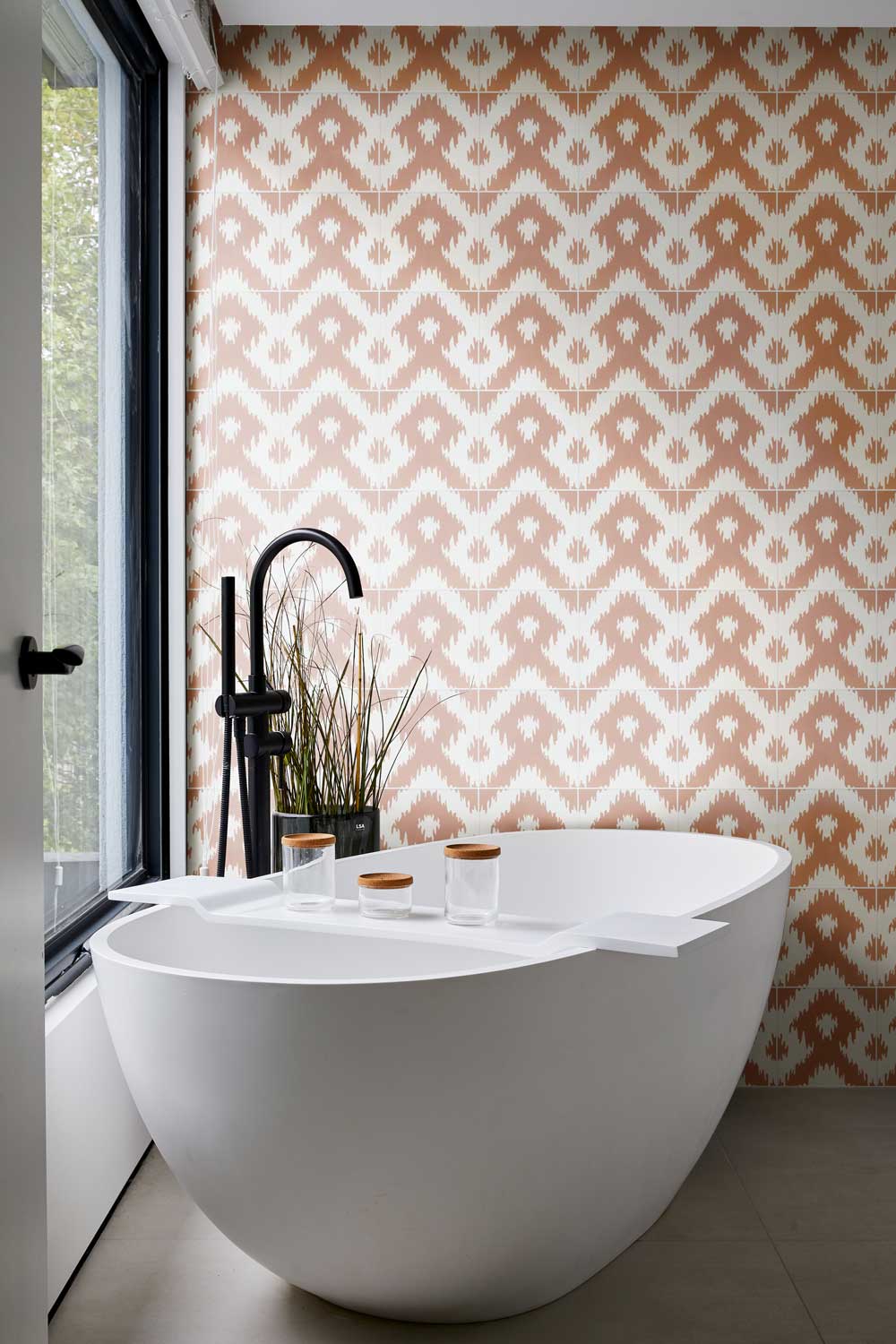
There's a temptation when using bold patterns, to tile just a section of space, maybe just an area prone to splashes. But as you can see here, tiling a bold design, like Navajo from Ca'Pietra, from floor to ceiling, whilst teaming with plain bathroom flooring creates a stylish space in which to lie back and relax.
2. Repeat as a feature
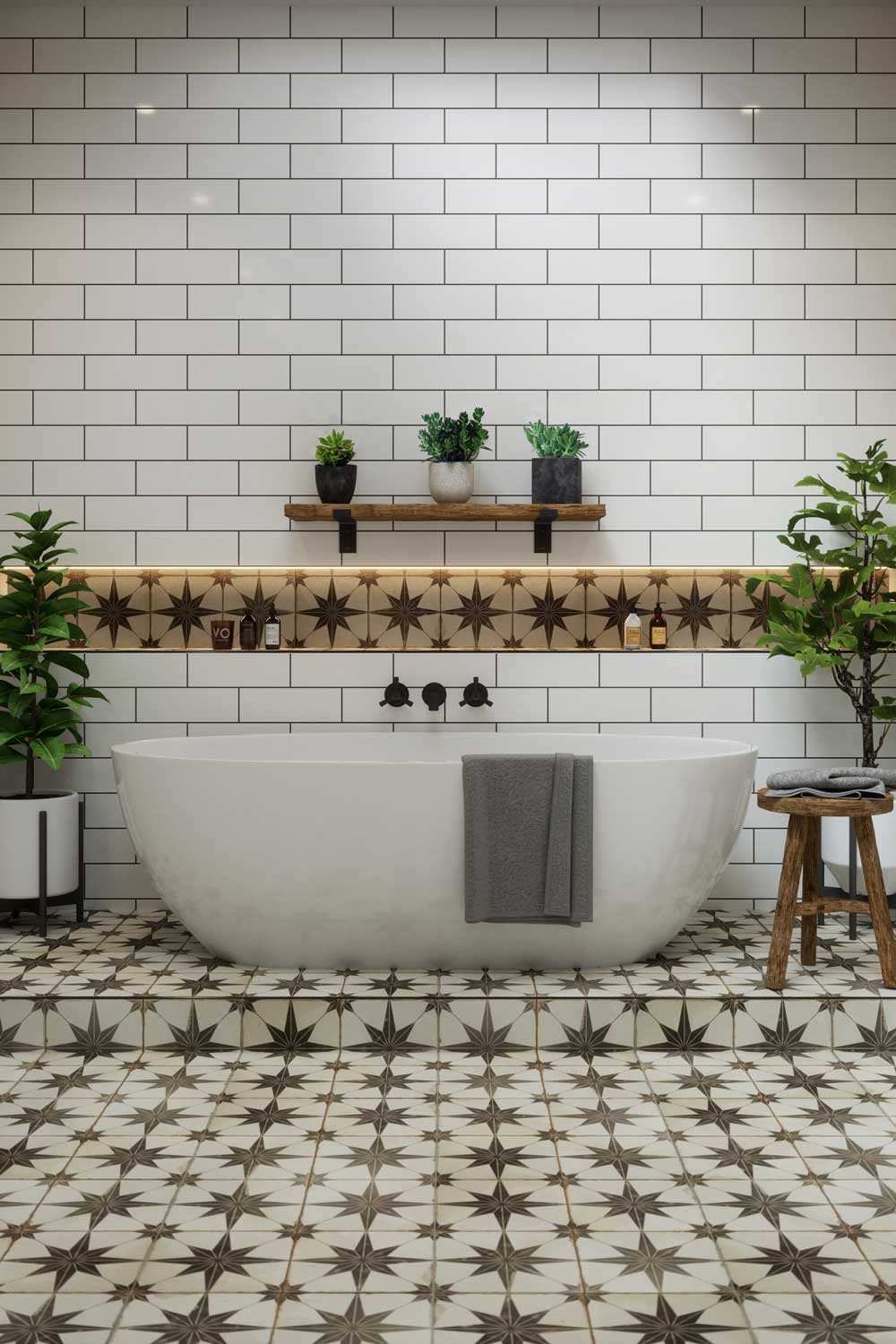
Think beyond bathroom flooring ideas. This bathroom is taken to another level with the repetition of these dramatic Metropolis star floor tiles from Tile Mountain appearing on the alcove shelf and backlit as a feature backdrop.
3. Tile wall to wall
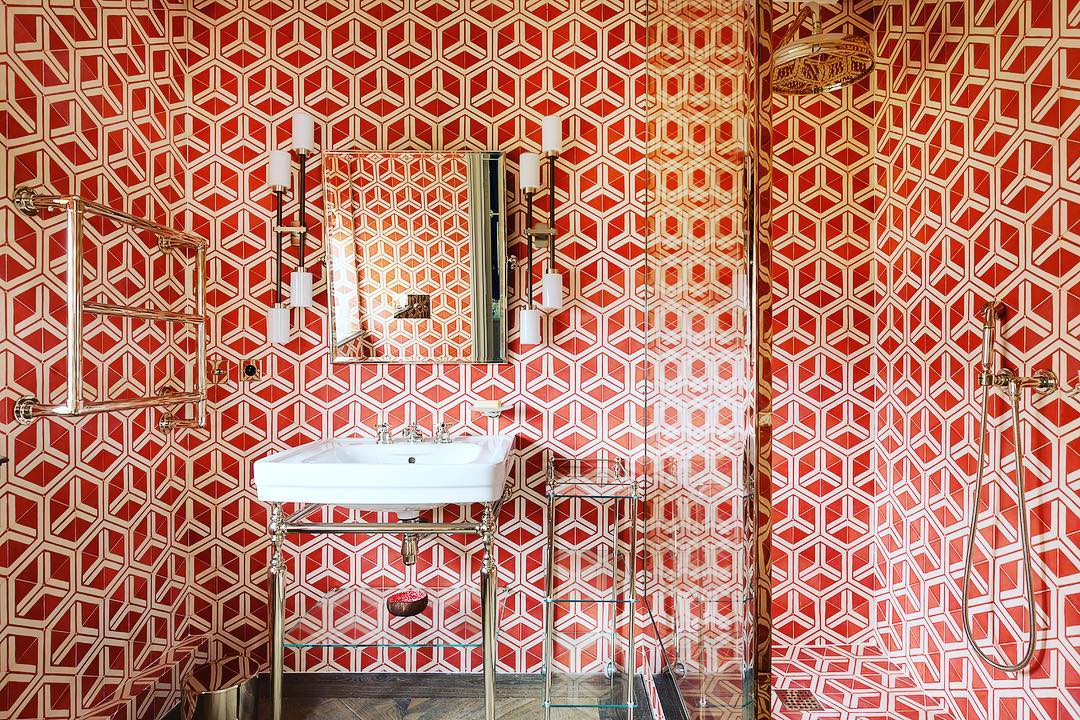
For a scheme that's loud and proud, going wall to wall with a bold and colourful encaustic tile is the answer. This is a serious commitment though in a room you're going to use every day, so think seriously about a colour and pattern you can live with long term. Tiles are not as easy to change as a quick lick of paint.
These Hex cement tiles from Popham are hand made in Morocco and available at Opus Bathrooms.
4. Bring balance with a border
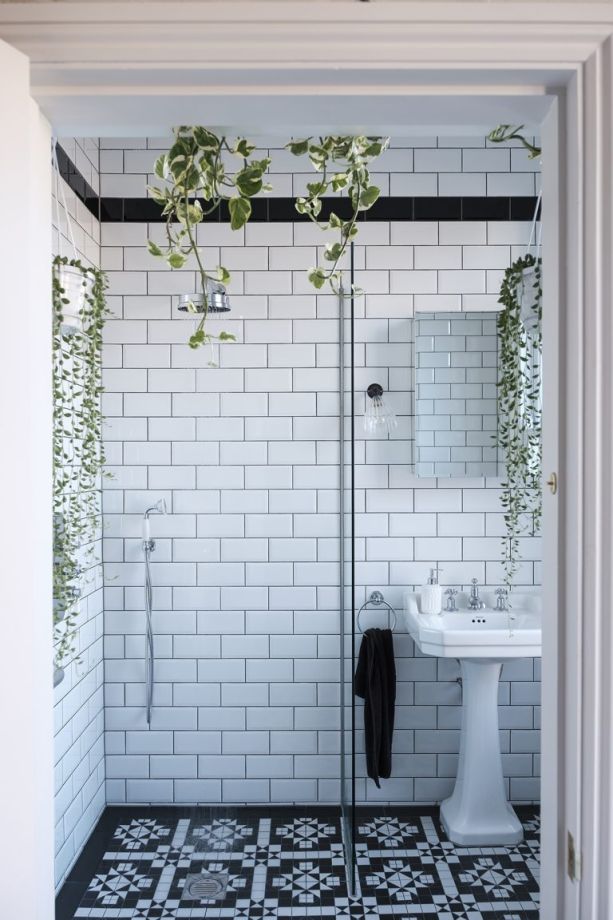
Stylist, Siouxsie Dickens, wanted her shower room to be dripping with greenery.
Floor-to-ceiling metro tiles, heritage fittings and a Victorian-style encaustic tile floor put a period spin in this modern room. The border of black tiles beautifully balances the space.
See the best house plants for your home.
5. Think large scale
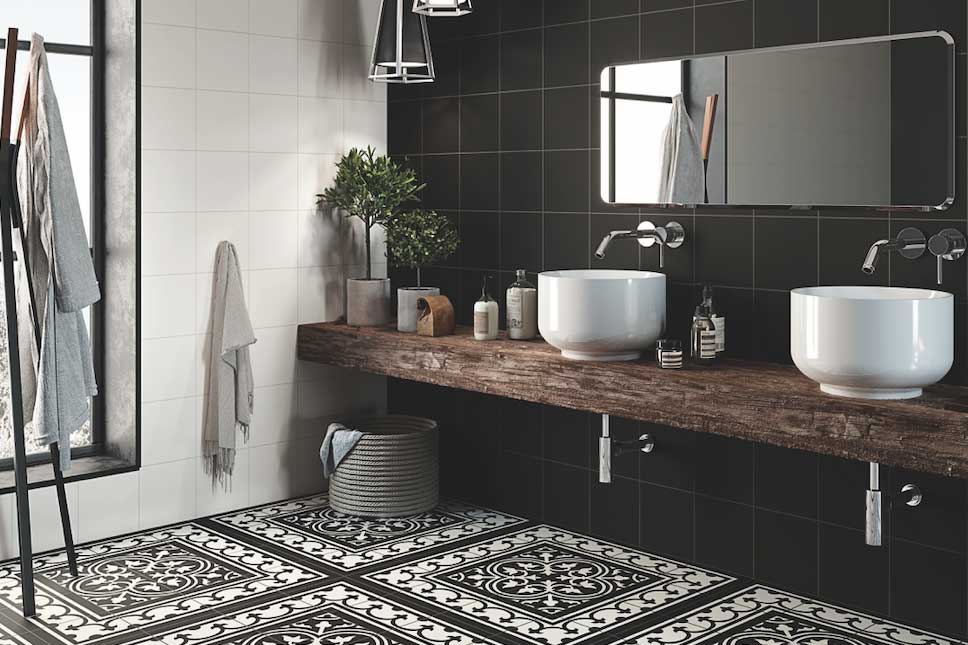
We're used to seeing encaustic tiles with Moorish patterns in small squares, but here the style has been scaled up to dramatic effect on this Pamplona 200x200mm glazed porcelain tile design from Tile Giant.
The crisp white deep double basins are a smart touch. See more double vanity ideas.
6. Mirror architectural features with pattern

Nailing two tile trends in one are these Jigsaw Mac Maize encaustic by Neisha Crosland for Ca'Pietra, available at Real Stone & Tile. Their scallop pattern on a scallop shape beautifully complements this attic shower room, subtly echoing its arched window.
See more scallop and fish scale tiles.
7. Opt for calming colours
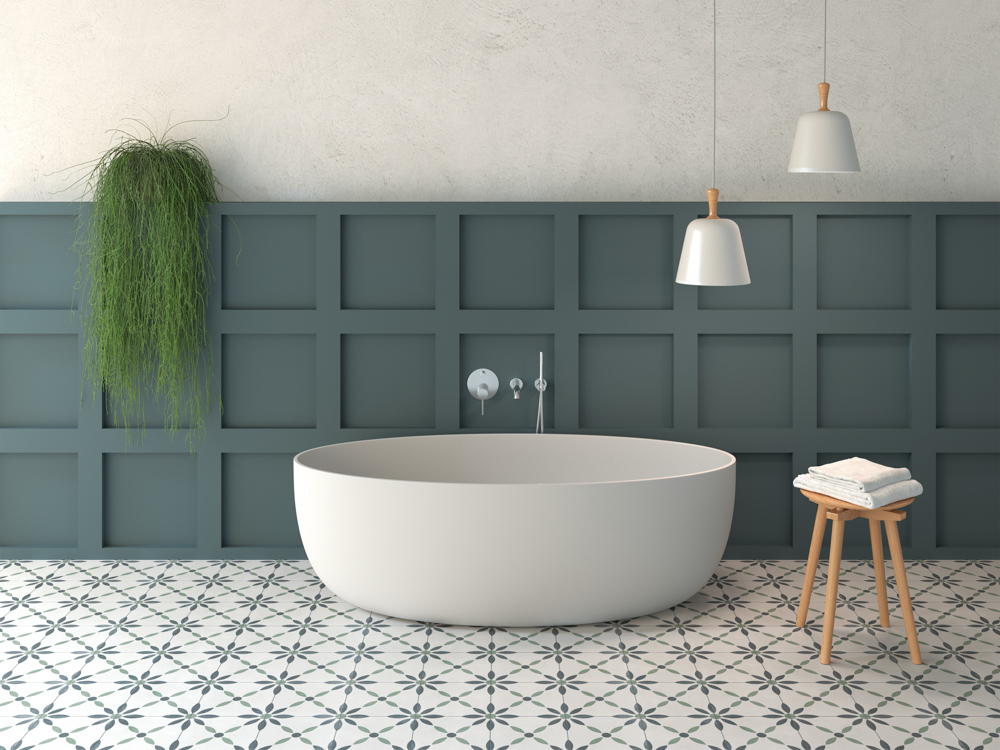
Inspired by traditional cement tiles, the Havana collection by Harmony Inspire resembles typical encaustic style but are actually low maintenance porcelain tiles that don't require sealing.
Despite the bold pattern on the tiles, the soothing shades in this bathroom give an overall feel of stylish serenity.
8. Jazz things up with geometric shapes
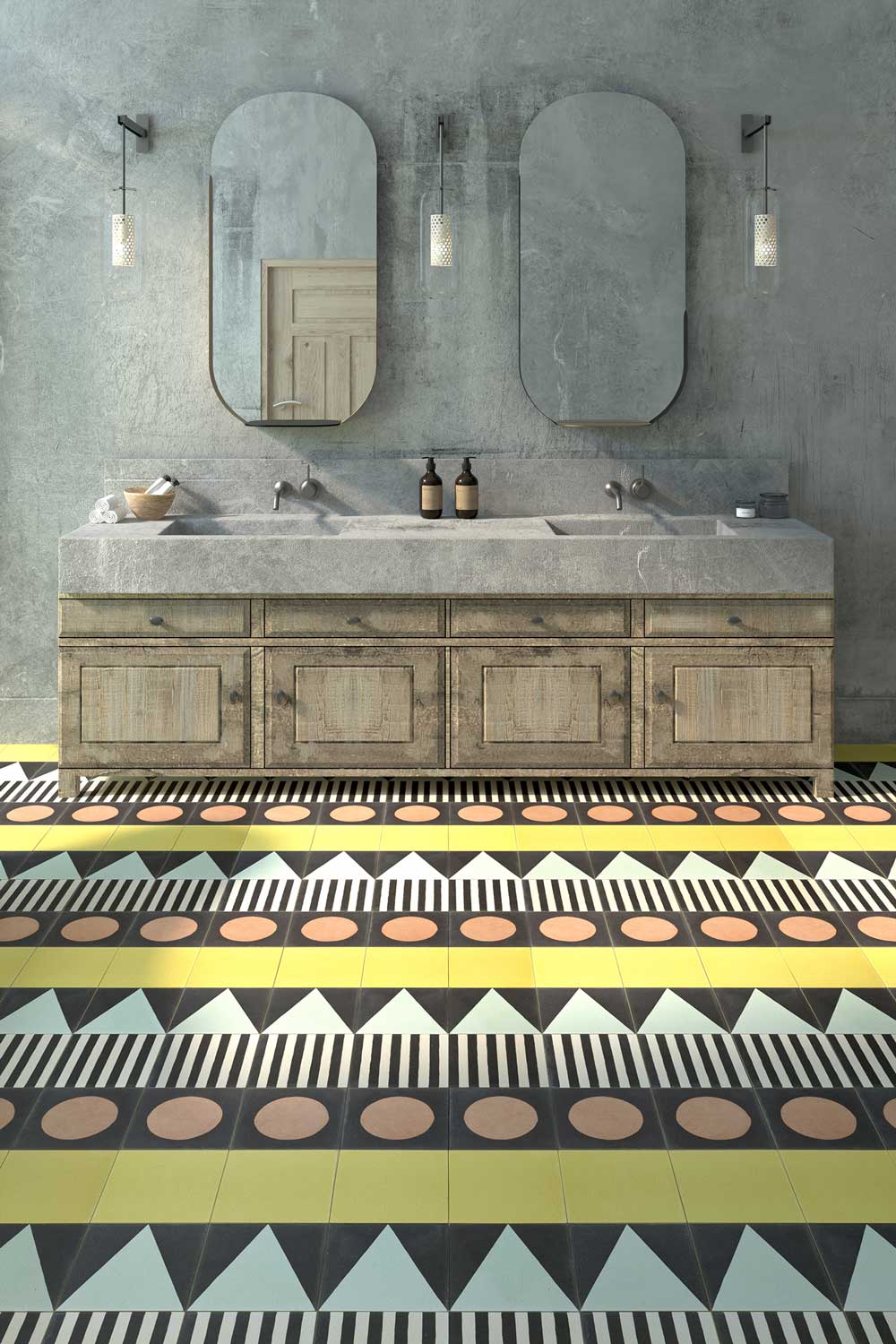
This neutral bathroom has been transformed with these Carnival handcrafted cement floor tiles from Otto Tiles. Rows of geometric patterns interspersed with stripes of plain yellow have given this otherwise classic space a contemporary spin.
9. Waterproof a wall
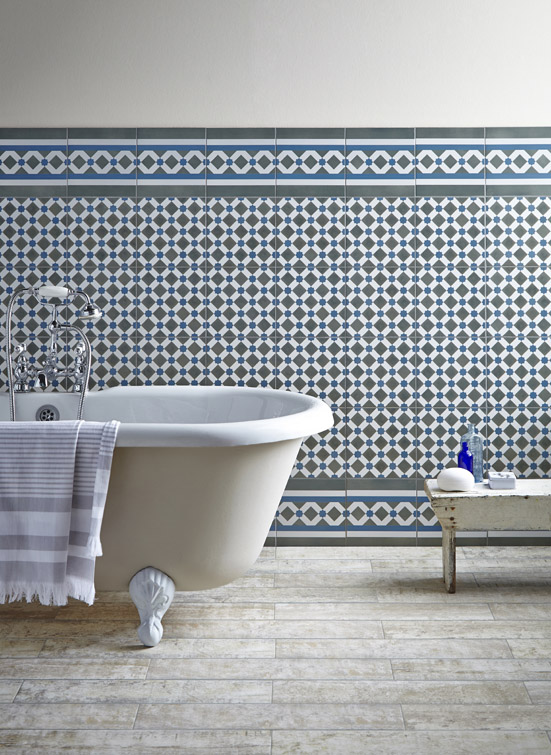
Henley, Topps Tiles
Think beyond bathroom flooring ideas too. Consider using encaustic tiles to make statement walls
Tiling behind a freestanding bath with encaustic-style porcelain tiles will not only create a beautiful backdrop to offset your bath against, it will protect your walls from water splashes. This is the Henley range from Topps Tiles.
10. Tile below the basin
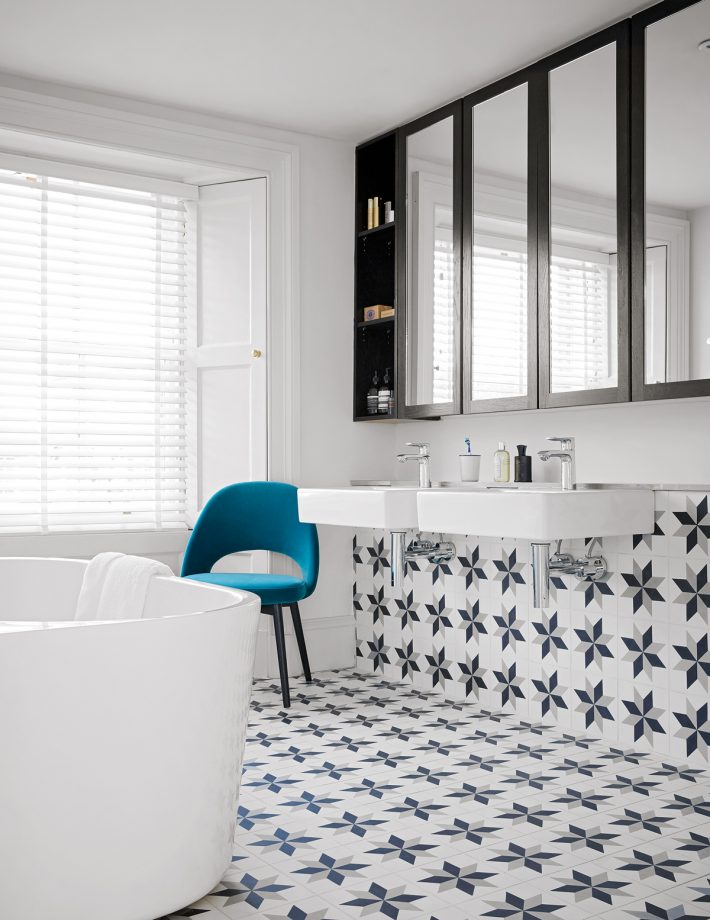
Keep a scheme cohesive but prevent a bold pattern from becoming too over-powering by tiling the wall just up to the basin in the same design as the floor. This allows the tub to take centre stage.
See more freestanding bath ideas.
11. Mix with a metro

The Metro tile is another huge bathroom trend that won't have escaped your notice. Together with the encaustic-style tiles on the floor and the dark painted woodwork and grout, the two styles create a stylish look in this bathroom.
The Berkeley charcoal tile at Topps Tiles is similar to this.
12. Go bold with monochrome
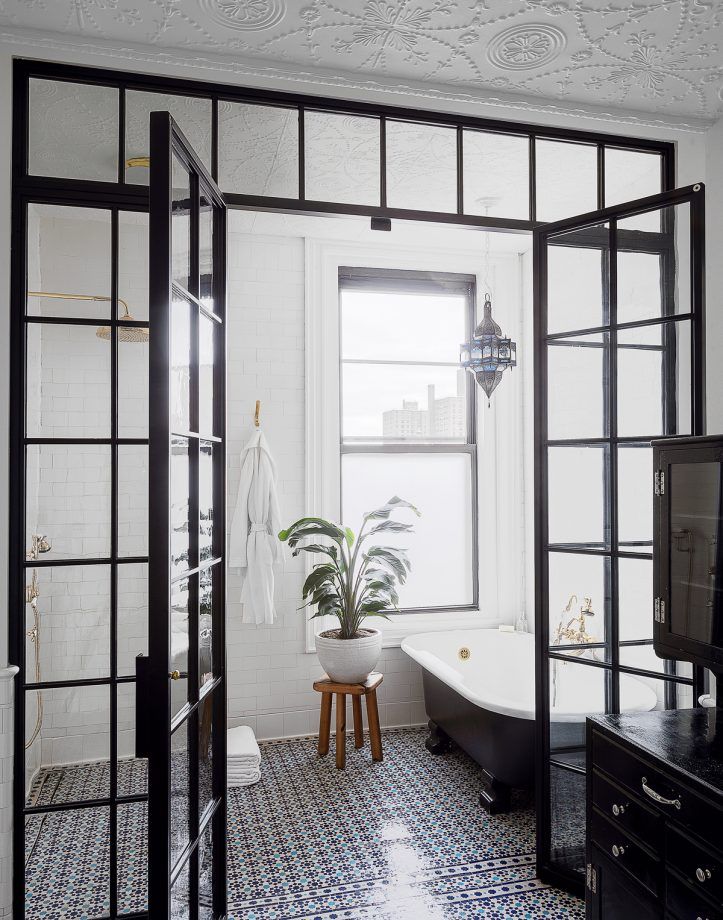
From the Crittall-style doors to the free-standing tub, the black and white palette used in this monochrome bathroom is beautifully united in the encaustic-style flooring.
See where to buy Crittall-style shower screens.
13. Create a statement shower room

The visual effect of these geometric encaustic tiles is cool and contemporary in this shower room. Make sure your walls and floors are even - not always the case in a period home - if you're opting for a style like this. Ca'Pietra offer similar tiles.
See more shower room ideas.
14. Add interest with a splashback

These pretty Grace tiles by Gayafores are a reinterpretation of the traditional encaustic tile, but being porcelain (and glazed) they are perfectly suited for areas prone to splashing, such as behind as behind a basin.
Are encaustic tiles suitable for bathrooms?
Encaustic tiles are suitable for bathrooms. In fact cement encaustic tiles can be used on almost any internal floor or wall surface as long as the sub-base is suitable and prepared for tiling and weight-bearing, according to Hamish Smith, Creative Director, Ca' Pietra.
"Encaustic tiles are a little heavier than the average wall tile," says Hamish. "Encaustic tiles can also be used in wet areas such as shower rooms, but it’s likely they will fade slightly, especially darker colours and patterns due to the natural pigments used, however, it is all part of the natural ageing process and part of their charm."
Do encaustic tiles need sealing?
Yes encaustic tiles do need sealing. But according to Hamish Smith, Creative Director, Ca' Pietra, a few simple steps are all that is required. "First, make sure the surface of each tile is level, clean and dry, as encaustic tiles are porous in their raw, natural state. Next, treat the tiles with an impregnating sealant, as this will protect them from staining.
Ideally you should apply 1-2 coats allowing at least 3 hours drying time in between.
If the tiles are coated with a thin layer of sealer every one or two years this will reduce the colours fading."
What do you seal encaustic tiles with?
"For best results, you must seal encaustic tiles every two to five years as they are a porous material and sealing them protects the tiles from staining," says Hamish Smith, Creative Director, Ca' Pietra. "Apply 2-3 coats of Stone Essentials Stone Shield Sealant with a sponge, removing any excess from the surface. Repeat until the sealant is no longer penetrating the tiles."
Jacky Parker is a freelance lifestyle journalist and writer, producing a wide range of features for magazines and digital platforms. She has written for Livingetc and its sister titles, Homes & Gardens and Country Homes & Interiors for more than 15 years, both as a freelance contributor and as Acting Digital Editor and Acting Style Content Editor, regularly reporting on the latest interiors, gardens and wellness inspiration, speaking to experts in their respective fields, and discovering the best tips.
Jacky has also written for other publications, including Sunday Times Style, The Telegraph, Architectural Digest, House Beautiful, ELLE Decoration, Red, Grand Designs and more.